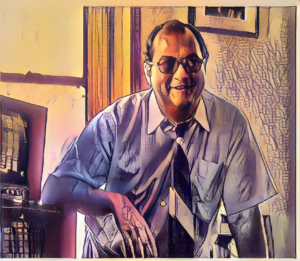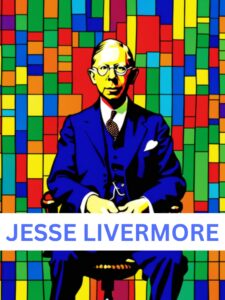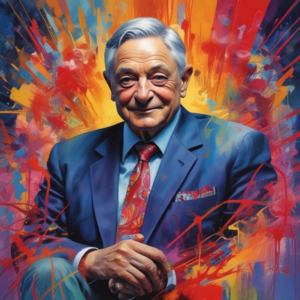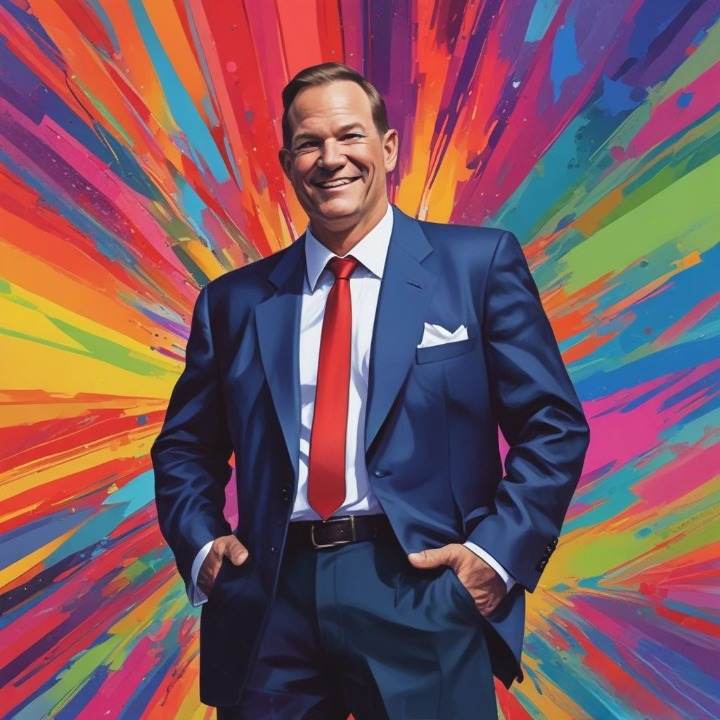RICHARD DENNIS

Think and Trade like Richard Dennis
Richard Dennis is one of the most celebrated traders in financial history, famously known as the creator of the “Turtle Traders” experiment. Dennis proved that successful trading could be taught by transforming ordinary people into consistently profitable traders through a disciplined, rule-based trend-following system. His philosophy emphasizes consistency, discipline, emotional control, and a clear understanding of market psychology. Let’s explore how you can think and trade like Richard Dennis, guided by his most insightful quotes and enriched by practical examples from his extraordinary trading career.
1. “I always say you could publish rules in a newspaper and no one would follow them. The key is consistency and discipline.”
Richard Dennis firmly believed that the real secret to trading success was not hidden knowledge but the ability to consistently follow clearly defined rules without deviation, even under pressure.
Example:
Dennis’s Turtle Traders famously received straightforward trading rules—publicly available trend-following strategies. Despite their simplicity, the rules were profitable because Dennis taught traders the discipline to stick to them through losses and drawdowns, transforming initial capital into millions.
2. “Almost anybody can make up a list of rules that are 80 percent as good as what we taught people. What they couldn’t do is give them the confidence to stick to those rules even when things are going bad.”
Dennis emphasized the psychological component of trading, highlighting that confidence and resilience under stress differentiate successful traders from average ones.
Example:
In the 1980s, Dennis trained his Turtle Traders to handle prolonged losing periods by building their confidence through strict risk management. The successful Turtles maintained their trust in the rules during inevitable losing streaks, ultimately benefiting from major trends when they appeared.
3. “You have to minimize your losses and try to preserve capital for those very few instances where you can make a lot in a very short period of time. What you can’t afford to do is throw away your capital on suboptimal trades.”
Dennis focused on risk management, knowing that capital preservation is critical for survival in trading. He stressed that most profits come from a small percentage of trades.
Example:
Dennis’s system involved strict stop-loss rules, limiting risk to around 1-2% per trade. This ensured the Turtles never lost enough capital to prevent capturing major trend moves like the commodity bull market of the late 1970s, where Dennis himself earned tens of millions.
4. “Trading decisions should be made as unemotionally as possible.”
Removing emotions from trading decisions is central to Dennis’s philosophy. Emotional discipline keeps traders rational and consistent.
Example:
Dennis trained his Turtles to execute trades mechanically, based solely on price signals, not feelings. The Turtles succeeded by following clearly-defined entry and exit rules, such as buying a breakout above a 20-day high without hesitation.
5. “When you have a position, you put it on for a reason, and you’ve got to keep it until the reason no longer exists.”
Dennis encouraged traders to stick to their strategy and not exit prematurely out of fear or greed. A position must remain open until objective evidence indicates the trend has reversed.
Example:
During sustained bull markets in commodities like oil or soybeans, Dennis’s trend-following method stayed fully invested as long as prices continued rising, capturing substantial profits rather than exiting too early due to market noise.
6. “I learned to avoid trying to catch up or double up to recoup losses. I also learned that a certain amount of loss will affect your judgment, so you have to put some time between that loss and the next trade.”
Dennis warned against the dangers of revenge trading and emphasized the importance of stepping back after losses to regain clarity.
Example:
When Dennis suffered large losses early in his career, he learned the dangers of “doubling down.” He taught the Turtles never to increase position sizes after losses and often advised taking a break to clear emotional biases before returning to trading.
7. “You should expect the unexpected in this business; expect the extreme. Don’t think in terms of boundaries that limit what the market might do.”
Dennis’s trend-following approach embraced market extremes. He anticipated rare but significant market moves and was prepared to exploit them fully.
Example:
Dennis famously profited during the historic silver bubble in 1979-1980, capturing massive profits because he never assumed prices had limits. His openness to extreme moves allowed him to seize opportunities that many traders missed due to disbelief.
8. “If there is any lesson I have learned in the nearly twenty years that I’ve been in this business, it is that the unexpected and the impossible happen every now and then.”
Dennis understood that market anomalies occur more often than expected. Traders must be prepared mentally and strategically for such events.
Example:
Dennis successfully navigated the extreme volatility in commodity markets of the late 1970s and early 1980s precisely because his system was designed to thrive during unusual price moves, recognizing that “impossible” market behaviors do occur.
9. “Trade small because that’s when you are as bad as you are ever going to be. Learn from your mistakes.”
Dennis advocated small position sizes for beginner traders, ensuring they survive mistakes long enough to learn and become profitable.
Example:
When training the Turtles, Dennis initially limited their capital exposure. They started with small positions, gradually increasing size only after demonstrating consistent discipline and profitability, which allowed them to improve without risking ruin.
10. “The market being in a trend is the main thing that eventually gets us in a trade. Being consistent and making sure you do that all the time is probably more important than the particular characteristics you use to define the trend.”
Dennis’s core belief was that consistent adherence to simple trend-following rules was more critical than complicated methods of trend identification.
Example:
Dennis’s own rules were simple (buying on breakouts, selling on breakdowns), yet extremely effective when applied consistently. His traders profited not because the rules were intricate, but because they were consistently executed.
11. “A good trend following system will keep you in the market until there is evidence that the trend has changed.”
Dennis taught traders to remain in positions as long as the trend remained intact, avoiding premature exits based on temporary fluctuations.
Example:
Dennis’s trend system kept traders in markets like gold during extended rallies, only exiting when clear signs of reversal emerged, maximizing profit from prolonged trends.
12. “Whatever method you use to enter trades, the most critical thing is that if there is a major trend, your approach should assure that you get in that trend.”
Dennis emphasized the importance of capturing significant trends above any entry-specific methodology.
Example:
The Turtles’ success in major trends, like the currency and commodity bull markets of the 1980s, was due to reliably entering trends early through Dennis’s clear breakout signals, ensuring they never missed significant market movements.
Applying Richard Dennis’s Wisdom in Your Trading Strategy
To trade like Richard Dennis, you should:
• Adopt a disciplined and consistent trading plan.
• Maintain emotional control and avoid impulsive decisions.
• Prioritize capital preservation and risk management.
• Use systematic trend-following rules.
• Expect and prepare for extreme market movements.
Final Thoughts:
Becoming a Successful Trend Follower
Richard Dennis proved that trading success isn’t magical—it’s about unwavering discipline, emotional strength, and systematic execution. His lessons transcend markets and eras, highlighting consistency, simplicity, and psychological resilience as timeless keys to profitability.
Think like Dennis, trade like Dennis, and let the disciplined execution of a proven trend-following system guide you to long-term success.
Who is Richard Dennis ?
- January 1949 – Birth and Early Life: Richard J. Dennis is born in Chicago, Illinois, in January 1949.
He grows up in a working-class family on Chicago’s South Side without any privileged background or financial connections.
- Mid-1960s – First Forays into Trading: As a teenager at St. Laurence High School in Chicago, Dennis makes his first attempt at investing by buying ten shares of a $3 “phonograph” stock. The company soon goes bust, making this early trade a failure, but Dennis hones his risk-taking skills playing poker, where he intuitively grasps odds and strategy.
These youthful experiences with speculation and probability set the stage for his future trading career.
- 1966 – Enters the Trading Floor: At 17 years old, Dennis takes a summer job as an order runner on the floor of the Chicago Mercantile Exchange, earning $1.60 an hour.
Immersed in the frenzied pit atmosphere (likened to an “indoor game of tackle football”), he becomes determined to start trading himself, even though the exchange requires a minimum age of 21 to hold a trader’s seat.
- 1968 – Trading via a Proxy: Still underage to trade, Dennis finds a clever workaround to enter the pits. He begins trading small “mini” contracts at the MidAmerica Commodity Exchange by acting as his own runner and having his father execute trades on his behalf (since Dennis is not yet 21).
With hand signals from Richard off to the side, his father (a city employee with no trading background) serves as a proxy in the pit.
This allows Dennis to initiate his trading career in his late teens, gaining early experience and some initial trading success even before he is legally an adult.
- 1970 – First Trading Stake: After briefly attending DePaul University (where he earned a philosophy degree) and enrolling in – then quickly abandoning – a graduate program at Tulane, Dennis decides to trade full-time. He borrows $1,600 from his family to buy a seat on the MidAmerica Exchange (costing about $1,200) and is left with roughly $400 in actual trading capital.
Starting with this modest stake, he trades in the commodity pits; by the end of 1970 he has turned the $400 into about $3,000, a substantial early milestone and, as Dennis described it, “compared to $400… a real grubstake”.
- 1973 – Six-Figure Profits: Dennis’s trend-oriented trading approach gains traction amid the volatile commodity markets of the early 1970s. By 1973, at just 24 years old, his trading capital has grown to over $100,000.
His success is fueled by taking longer-term positions (riding out short-term fluctuations) rather than the quick “scalp” trades favored by many floor traders, and by pyramiding – reinvesting gains to build larger positions when trades go in his favor.
- 1974 – First Million: Dennis scores a major win in the soybean market. In 1974, amid booming grain prices, he earns approximately $500,000 in profit from trading soybeans.
By the end of that year, Dennis’s net worth surpasses $1 million, making him a millionaire at just 25 years old.
This rapid rise from a few hundred dollars to seven figures cements his reputation as a trading prodigy.
- Late 1970s – “Prince of the Pit”: Throughout the late 1970s, Dennis continues to compound his fortune in an era of inflation and commodity shortages. Notably, global events like the 1972 “Great Russian Grain Robbery” (when the Soviet Union’s secret buying of U.S. wheat drove huge price swings) create strong trending markets, which trend-followers like Dennis thrive on.
He consistently buys new weekly or monthly highs and sells new lows, exploiting momentum in markets that many others consider chaotic. Unlike most floor traders who grab quick profits, Dennis holds positions for longer durations and adds to winners, a strategy that yields large gains in trending conditions.
By this time he has purchased a full membership at the prestigious Chicago Board of Trade and opened his own trading office, enabling him to trade a wider array of futures markets beyond just grains.
His uncanny success on the trading floor earns him the nickname “Prince of the Pit,” as colleagues recognize him as one of the era’s most formidable commodity speculators.
- Mid-1983 – Conceiving the Turtle Experiment: Having become a legend in the futures world, Dennis now turns to an audacious question: can trading prowess be taught, or is it innate? He frequently debates this “nature vs. nurture” issue with his friend and fellow trader William Eckhardt. Dennis firmly believes he can teach anyone to trade successfully with the right rules, so in mid-1983 he proposes an experiment to prove it.
He publicizes a training program for novice traders, placing ads in financial newspapers and magazines. The ad promises that selected applicants will undergo a brief training and then be given real accounts to trade. The response is overwhelming – over 1,000 people apply, from which Dennis and Eckhardt interview about 80 candidates and ultimately select a small group for the trial.
- December 1983 – First Turtle Class Trained: Dennis brings the first group of Turtle Traders to Chicago for training. This initial class consists of 13 individuals, chosen from the large pool of applicants ranging from experienced gamers to complete market novices.
Starting in December 1983, Dennis trains this group for two weeks, teaching them a simple, mechanical trend-following system. The system’s core rules include buying futures when prices break above a recent high (a breakout) and selling/shorting when prices fall below a recent low, across a diversified set of markets (commodities, currencies, bonds, etc.)
He also schools them in risk management: cutting position sizes during losing streaks, setting stop-loss exits, and pyramiding into winning trades up to a predefined limit.
The name “Turtles” comes from Dennis’s offhand remark – inspired by turtle farms he saw in Singapore – that he would “grow traders just like they grow turtles”.
- January 1984 – Turtles Begin Trading: After the training in late 1983, Dennis’s first Turtle cohort starts trading live in January 1984, initially with small test accounts to practice the rules in real market conditions.
Once the novices demonstrate they can follow the system, Dennis entrusts them with significant capital from his own funds – typically accounts between $500,000 and $2 million for each trainee – by the start of February 1984.
Under Dennis’s oversight, these novice traders now operate as professionals, implementing the trend-following strategy with real money. Dennis’s bold experiment is underway, to see if total newcomers can be molded into profitable traders using his systematic approach.
- December 1984 – Second Turtle Class: Pleased with the initial results, Dennis runs a second training wave one year later. In December 1984, he recruits and trains another group of Turtles using the same methodology. Between the two intakes (1983 and 1984), a total of 23 individuals (21 men and 2 women) are trained in Dennis’s program
The Turtle trainees come from diverse backgrounds, and after instruction they too are given capital to trade. This concludes the formal Turtle experiment recruitment – Dennis and Eckhardt have two generations of trained traders to test their hypothesis across the next several years.
- 1984–1988 – Turtle Experiment Results: Over the subsequent years, Dennis’s “Turtles” prove the experiment a remarkable success. While not every trainee makes a fortune (a few struggled, often due to failing to stick to the rules during tough periods, as Dennis had predicted), many of the Turtles achieve strong performance. The two Turtle groups collectively earn over $175 million in profits for Dennis and their investors over about five years.
This outcome – widely publicized in trading circles – vindicates Dennis’s belief that with a sound strategy and proper training, ordinary people can be taught to become excellent traders. The Turtle experiment becomes one of the most famous trading experiments of all time, frequently cited in discussions about trading psychology and education.
- 1986 – Peak of Financial Success: By the mid-1980s, Richard Dennis is at the height of his trading career. 1986 in particular is an extraordinary year – Dennis reportedly earns around $80 million in profit that year alone.
This staggering one-year gain places him among the top earners in the financial world; for comparison, that same year George Soros is said to have made about $100 million and junk-bond king Michael Milken about $80 million.
Dennis’s trading style involves enduring periodic large losses in pursuit of even larger gains – for example, in 1986 he was down $10 million at one point before rebounding to finish massively up for the year.
His ability to score “mammoth home runs” in the markets (while calmly weathering the swings) reinforces his legend in the eyes of colleagues and financial media.
- October 1987 – Black Monday and Losses: The Black Monday stock market crash on October 19, 1987 sends shockwaves through all financial markets, and Dennis is not spared. On that day, as stock indices plummet over 20%, Dennis’s positions (largely in futures) suffer roughly a $10 million loss.
The crash and its aftermath trigger a sharp drawdown in the funds he manages. Between the crash and the turbulent months that followed, Dennis’s clients endure total losses estimated around $50 million by early 1988.
This period is the most significant setback of his career: strategies that thrived in trending markets were whipsawed by extreme volatility and trend reversals in the late 1987 environment. The “Prince of the Pit,” who had known mostly success until then, suddenly faces heavy criticism and pressure from the steep losses.
- Spring 1988 – Fund Shutdowns: In the wake of 1987’s crash, Dennis takes decisive action regarding his trading business. Earlier in 1987, he had partnered with investment bank Drexel Burnham Lambert to launch two public commodity funds (the Richard J. Dennis Preferred Futures Funds I and II) aimed at outside investors. By early 1988, those funds, initially totaling about $115 million in capital, have lost more than half their value due to the crash and subsequent choppy markets.
In April 1988, Dennis suspends trading in both funds to stem further losses. He also halts his other pooled trading operations for clients. Essentially, that spring Dennis withdraws from managing outside capital, acknowledging that the market conditions had deviated drastically from the trending patterns his systems were designed to exploit. (A spokesperson blamed “the worst markets we’ve seen in 10 years” for the funds’ poor performance, noting the decision to cease trading was made to protect investors).
- August 1988 – Retires from Trading: At 39 years old, Richard Dennis announces he is retiring from active trading to pursue other interests. On August 26, 1988, he permanently shuts down his remaining trading operations, including the Drexel partnership funds (which had briefly resumed trading in the summer of 1988 only to be closed for good).
In a public statement, Dennis explains that after 18 years of trading (during which he amassed a personal fortune of around $200 million), he feels it is time to apply himself to public service and policy rather than making more money.
“There is only so much satisfaction and utility to the making of money,” Dennis says, noting that he is fortunate to have enough assets to make a significant impact outside of trading.
As he approaches his 40th birthday, he expresses a desire to take on new challenges in the public policy arena. This marks a dramatic shift in Dennis’s life, as one of the most famous commodity traders of the era steps away from the markets.
- 1988 – Political Activism and Philanthropy: Upon retiring from trading, Dennis immerses himself in politics and philanthropy. In the 1988 U.S. presidential race, he serves as the national co-chairman for Democrat Bruce Babbitt’s campaign for the Democratic nomination.
(Dennis had been politically active even earlier in the 1980s, contributing to Democratic candidates such as Walter Mondale in 1984 and Adlai Stevenson III’s Illinois gubernatorial bid in 1986).
With his substantial wealth, Dennis now bankrolls various progressive and civil-liberties causes. Notably, around 1988 he donates $10 million to establish the Roosevelt Center, a liberal public policy think tank with offices in Washington and Chicago.
He also becomes a leading financial backer of People for the American Way, a liberal advocacy group founded as a counter to the Religious Right.
Dennis makes it clear he does not intend to run for office himself; instead, he plans to write, speak out, and fund initiatives and candidates, leveraging his fortune to influence public policy in areas he is passionate about.
- November 1990 – Legal Settlement: Following the collapse of his funds in 1987–88, some investors had filed complaints alleging Dennis did not adhere to his own trading rules during the market turmoil. These disputes are resolved in late 1990. In November 1990, Dennis’s firm reaches a settlement with investors, agreeing to pay over $2.5 million to settle the claims.
The settlement is made without any admission of wrongdoing on Dennis’s part and a judge approves the deal. This legal closure allows Dennis to fully put the chapter of the 1987 crash behind him as he moves on to his new focus on advocacy.
- Mid-1990s – Return to Trading (Briefly): After several years away from the markets, Dennis eventually decides to dip his toes back into trading. In the mid-1990s, he quietly resumes involvement in the futures industry, reportedly establishing a new managed futures operation (under his company, Dennis Trading Group) and taking on outside capital again.
By this time, Dennis is more of an off-floor money manager than a pit trader, and he attempts to apply systematic trading methods in an increasingly computerized market. He remains active in this fund management role through the late 1990s, though this second act in trading does not achieve the legendary success of his first.
- September 1996 – Drug Policy Reform Advocacy: As part of his shift toward public causes, Dennis becomes a prominent advocate for drug policy reform in the 1990s. By 1996, he is noted in the media as a “wealthy ally” of those fighting against the War on Drugs.
Having witnessed the social costs of drug prohibition, Dennis channels substantial donations into organizations and campaigns seeking to reform drug laws (for example, backing efforts to allow medical marijuana and to shift drug abuse from a criminal issue to a public health issue). His activism in this arena is an example of his Libertarian streak – though a longtime Democrat in electoral politics, Dennis strongly opposes drug criminalization on civil liberties grounds. This advocacy work in the mid-90s further establishes his post-trading identity as a philanthropist and policy influencer.
- Summer 2000 – Final Exit from Fund Management: Dennis’s foray back into trading in the 1990s comes to an end by mid-2000. After some lackluster performance and new losses in the late 1990s, his revived managed funds suffer a downturn in the summer of 2000, prompting Dennis to shut down these trading operations
He closes out the remaining investment accounts and ceases managing money for clients. This effectively marks the end of Richard Dennis’s professional trading career – for the second time. After 2000, he would no longer run funds or actively trade other people’s capital, turning his attention fully to other endeavors.
- 2000s – Libertarian and Policy Engagement: In the 2000s, Richard Dennis continues to devote himself to political and social causes. He becomes a key figure in several organizations aligned with his beliefs in individual liberty and sensible policy. Dennis serves as the chairman of the advisory board of the Drug Policy Alliance, lending leadership and financial support to the nation’s leading drug-law reform group.
He also joins the board of directors of the Cato Institute, a libertarian think tank, and the board of trustees of the Reason Foundation, which publishes Reason magazine and promotes free-market policy ideas.
In these roles, Dennis works alongside other notable libertarian-leaning philanthropists and business figures to influence debates on issues ranging from drug decriminalization to economic regulation. He remains the president of Dennis Trading Group (largely an investment vehicle) but is now best known for his philanthropy and advocacy. By the late 2000s, Dennis is regarded not only as a trading legend of the 1970s–80s, but also as an important benefactor in drug policy reform and a supporter of libertarian causes, using his voice and resources to impact public policy well beyond the trading floor.


